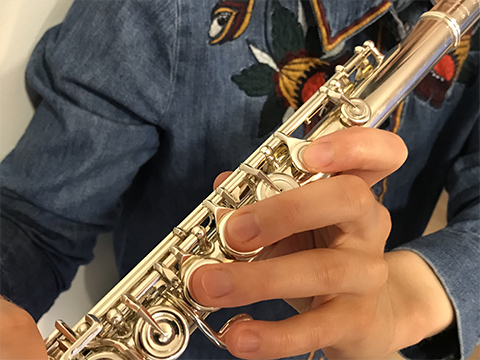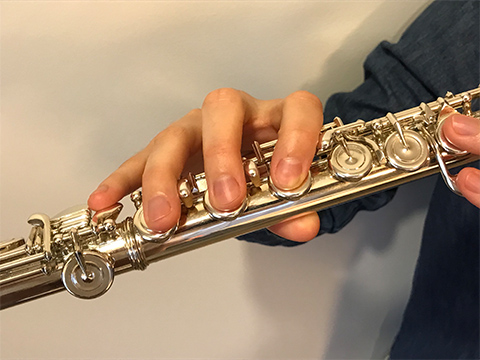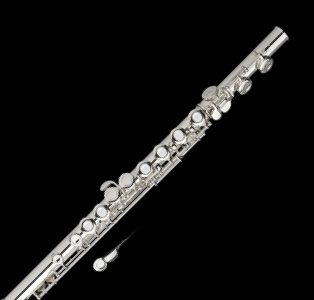
长笛 fingering chart
通过点击任何音符来试用我们的交互式长笛指法图表。您还可以免费下载和打印 PDF 图表。

Flute fingering and hand position
The flute is a woodwind instrument which, unlike other instruments in this family, does not have a reed and therefore has an open mouthpiece. There are typically 16 tone holes on a flute.
How to hold the flute
Before using the above interactive fingering chart and playing your first pieces, you need to know where to position your hands on the flute.
Let’s start with the left hand, which faces towards you with your thumb towards you. Underneath the flute, there is a long, rectangle key where you can place your thumb. Your index finger should sit on the second key (so skip the first small key). Your middle finger should also skip a key. Your ring finger should sit on the key directly beside your middle finger (see image 1).
The right hand should be faced away from you. Your thumb simply rests under the flute to support it. Your index, middle and ring finger should sit on the three bottom keys of the body. Your pinkie should rest on the first key of the foot joint (see image 2).
Once you understand where your hands should be positioned, you can use the interactive fingering chart above to practice the notes and to start playing your first pieces! You can simply click on any note and the fingering will be displayed on the visual flute. Don’t forget, you can also download and print the flute fingering chart for free.
 Image 1: Left-hand position
Image 1: Left-hand position
 Image 2: Right-hand position
Image 2: Right-hand position
Where to start with the interactive fingering chart and playing your first notes on the flute
Your hands are in position and you’re now ready to play your first notes! The interactive fingering chart will help you but first, you’ll need to know where to begin.
The easiest notes to start with on the flute are B, A and G because they don’t require many keys. In addition, once you can play the note B, you simply add one more key to play the note A, and so on. Use the flute fingering chart above to continue learning the other notes.
Please note, there are alternative fingerings and we have included some of the most common examples on the interactive flute fingering chart.
Now you’re all set - play your first pieces with Tomplay!
We have a large catalogue of flute sheet music for all different levels, including beginner level. Our team of professional musicians record the play-along tracks and produce the sheet music for you to play and enjoy! For beginner flautists, you’ll be happy to hear that we also provide a visual flute - select any note and the visual instrument will light up to show you which keys you need to press!


